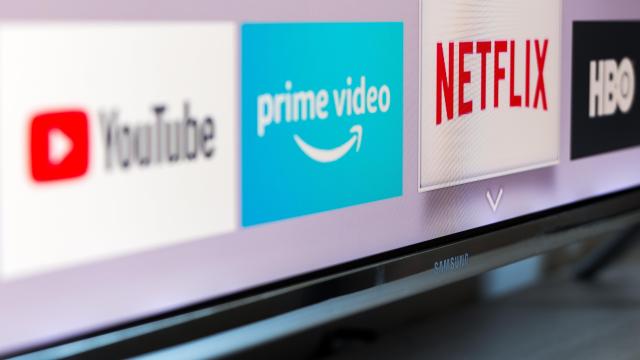You’ve probably noticed your favourite streaming giants, the likes of Netflix, Hulu, and HBO Max — once the haven for creators lured in by the freedom to make shows that would never fly on broadcast TV — are increasingly resorting to tactics like subscription price hikes and a shift to cheaper, more formulaic (aka “safe”) content. Some are even adding ad breaks. Why is this happening? The root cause could be described as a monopsony in action.
That’s not a typo — a monopsony is an economic concept distinct from a traditional monopoly, and it helps account for what’s going on with streaming services in 2022. Here’s what to know about how a monopsony works, and what it means for how you watch your favourite TV shows.
The difference between a monopsony and a monopoly
Both a monopoly and a monopsony refer to situations in which a single entity controls a so-called free market; the difference lies in who is doing the controlling, the seller or the buyer. A monopoly is one seller and many buyers, while a monopsony is one buyer and many sellers. Where a monopoly controls a market by preventing competitors from selling a product, in a monopsony, the buyer holds all the power.
A textbook example of monopsony is a milk processor that becomes the only option for dairy farmers trying to sell their product; this forces those farmers to sell for less. In more topical terms, Investopedia makes the case for Amazon as a monopsony, as it has become the largest and often only buyer of certain products that it then sells on its platform. Amazon could easily be explained as a monopoly as well; the two terms beget each other.
What a monopsony means for streaming TV
Understanding how a monopsony works helps us put words to a trend that’s been impacting viewers: As corporations continue to consolidate — from Amazon buying MGM, to Disney acquiring 20th Century Fox, to the recent merger of Discovery and Warner Bros. — fewer people are making more of the decisions about what shows get made. Meanwhile, streaming services, feeling the pinch of nosediving stock prices and overwhelming debt, are pulling back, cancelling shows more quickly and placing fewer big bets.
Suddenly, “sellers” (the people making the shows) are facing a market with fewer, more reluctant buyers. As comedian Adam Conover, who has created shows for both cable and streaming services, explained to The Washington Post, “the only people who are going to be profiting whatsoever are the very few CEOs at the top who make the deals happen, but everybody else is losing out.” Creators are being paid less, fewer ambitious projects serving diverse audiences are getting off the ground. Meanwhile, the buyers — the streaming services — seem increasingly inclined to favour cheaper, unscripted fare, furthering narrowing the options for creators.
You may not care much about TV creators being paid less, but the impact goes beyond that. When a handful executives hold all of the buying power for streaming content, then they get to determine what kind of content they think viewers want, control the price, and set the terms. The result, according to The Washington Post: back catalogues being scrubbed without warning, programming that takes fewer risks, and higher prices for subscribers. In short, a monopsony doesn’t exactly nurture the creativity nor provide the resources needed to make groundbreaking TV.
In many ways, this is nothing new. Actually getting a show onto the screen has always been a high bar. But briefly, the explosion in demand for content to fill up a host of new streaming services created a bubble market that operated mostly on speculation, as networks competed to land prestige talent, hoping subscribers would follow. As ongoing economic uncertainty slashes billions from streamers’ market caps, they are feeling a lot choosier — and they are the only ones privy to the data that determines whether a show is considered a hit or gets cancelled after a season.
The bottom line
The semantic differences between a monopsony and a monopoly are less important than the big picture: There’s no guarantee the shows you’re actually interested in watching will stick around on the service you’re paying for, or that streamers will continue to green light the sorts of innovative shows that garnered your attention in the first place.

Leave a Reply
You must be logged in to post a comment.